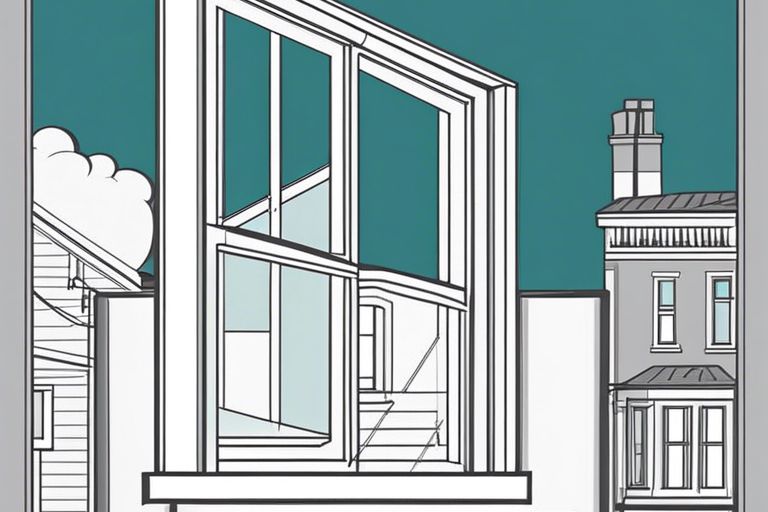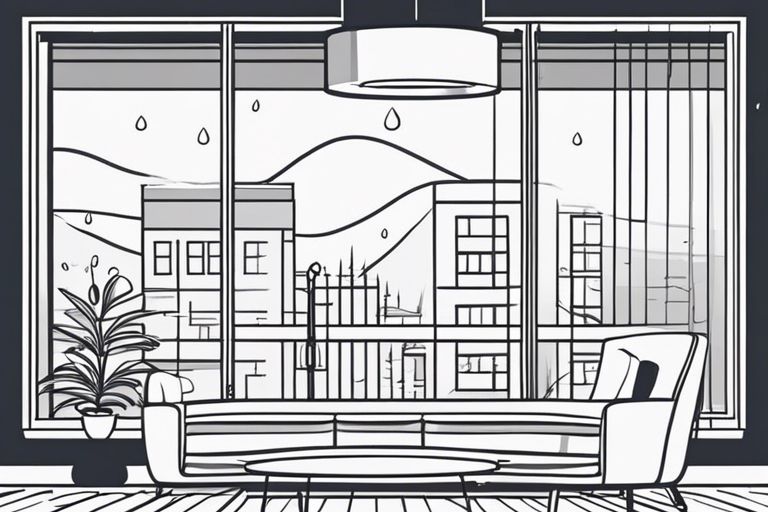The Ultimate Guide To Filling Gaps Around Window Frames And Saving Money On Energy Bills

Energy efficiency is not just about the big changes; sometimes, it’s the small steps that make a significant difference. One of the most common culprits for heat loss and increased energy bills is gaps around window frames. In this comprehensive guide, we will walk you through the steps to properly seal those gaps and save money on your energy bills. By following these simple yet effective tips, you can improve the comfort of your home and reduce your carbon footprint.
Key Takeaways:
- Proper insulation: Filling gaps around window frames is necessary to prevent air leakage and save money on energy bills.
- Cost-effective solutions: Seal gaps using affordable materials like weatherstripping, caulk, or foam tape to improve energy efficiency.
- Energy efficiency benefits: By properly insulating window frames, you can reduce heat loss, enhance home comfort, and lower heating and cooling costs.

The Ultimate Guide To Filling Gaps Around Window Frames And Saving Money On Energy Bills
Common Areas Where Gaps Occur
The most common areas where gaps around window frames occur are at the corners where the frame meets the wall, along the bottom of the window sill, and around the window trim. These gaps can lead to energy loss and higher heating and cooling bills.
Tools Needed for Inspection
Frames for inspecting gaps around window frames, you will need a flashlight to help you see into dark corners, a caulk gun for filling in gaps, a putty knife for applying caulk, and a weatherstripping to seal gaps around the window.
Around the window frame, it is crucial to pay attention to any moisture or drafts that may be seeping in, as these can indicate larger issues with insulation or damage to the frame. Inspecting and sealing these gaps can not only help you save money on energy bills but also improve the comfort and efficiency of your home.
Preparing for Gap Filling
Cleaning the Area Around the Window Frame
While preparing to fill gaps around window frames, it is crucial to start by cleaning the area thoroughly. Use a mild detergent and warm water to remove any dirt, dust, and grime that may have accumulated over time. Ensure that the surface is completely dry before proceeding with any gap-filling materials.
Removing Old Caulk and Debris
Filling gaps effectively requires removing any old caulk and debris that may be present around the window frame. One effective way to do this is by using a putty knife or a caulk removal tool to scrape away the old material. Ensure that all cracked, dried-out caulk and debris are completely removed to allow for a seamless application of new gap-filling materials.
Understanding the importance of proper preparation is key to successfully filling gaps around window frames. By cleaning the area thoroughly and removing old caulk and debris completely, you can ensure a more effective and long-lasting seal that helps reduce energy bills and improve insulation in your home.
Filling Gaps Around Window Frames
After Weatherize Your Home–Caulk and Weather Strip properly, it’s important to focus on filling gaps around window frames to save money on energy bills. The gaps around window frames can lead to significant heat loss in winter and cool air loss in summer, increasing energy consumption and costs. By effectively sealing these gaps, you can improve the energy efficiency of your home and reduce your carbon footprint.
Choosing the Right Caulk or Sealant
Choosing the right caulk or sealant is crucial for filling gaps around window frames effectively. Look for products specifically designed for windows and doors, as they are formulated to withstand temperature changes and UV exposure. Consider factors like flexibility, durability, and paintability when selecting a caulk or sealant for your window frames. Opt for products that are weather-resistant and adhere well to different materials.
Applying Caulk or Sealant Effectively
Filling gaps around window frames requires precision and attention to detail. Start by cleaning the area thoroughly and removing any old caulk or debris. Use a caulking gun to apply a uniform and continuous bead of caulk along the gap, ensuring full coverage. Smooth out the caulk with a wet finger or tool to create a neat and airtight seal. Allow the caulk to dry completely before painting or exposing it to moisture.
With the right caulk or sealant and proper application techniques, you can effectively fill gaps around window frames and improve the energy efficiency of your home. Regularly inspect and maintain the caulked areas to ensure they remain intact and provide optimal insulation against the elements.
Additional Energy-Saving Tips
For additional ways to save on energy bills and improve the efficiency of your home, consider the following:
- Regular maintenance: Keep windows and doors well maintained to prevent air leaks.
- Upgrade to energy-efficient appliances: Opt for appliances with an Energy Star rating to reduce energy consumption.
- Utilize smart thermostats: Programmable thermostats can help regulate temperature and reduce energy usage.
Knowing more about energy-efficient practices can lead to significant savings. To learn more, check out Energy-Efficient Windows: 2023 Guide.
Weatherstripping and Door Sweeps
With proper weatherstripping and door sweeps, you can effectively seal any gaps around your doors and windows, preventing cold drafts from entering your home.
Insulating Window Frames
With insulating your window frames, you can further reduce heat loss and improve energy efficiency in your home.
Tips for insulating window frames include using caulk or weatherstripping to seal gaps, installing storm windows for an extra layer of insulation, and considering energy-efficient window treatments like insulated curtains or blinds to trap heat inside your home.
Final Words
Following this ultimate guide to filling gaps around window frames will not only help you save money on energy bills but also ensure a more comfortable living space. By taking the time to properly seal and insulate your windows, you can reduce drafts, increase energy efficiency, and create a more sustainable home environment. So, roll up your sleeves, grab your tools, and start filling those gaps today!
FAQ
Q: Why is it important to fill gaps around window frames?
A: Filling gaps around window frames is crucial to prevent air leakage, improve energy efficiency, and save money on energy bills.
Q: What materials are needed to fill gaps around window frames?
A: To fill gaps around window frames, you will need materials such as caulk, weatherstripping, foam sealant, and a putty knife.
Q: How do I identify gaps around my window frames?
A: To identify gaps around window frames, look for drafts, visible light around the frames, or use a stick of incense to detect air movement.
Q: Can filling gaps around window frames improve indoor comfort?
A: Yes, sealing gaps around window frames can enhance indoor comfort by maintaining consistent temperatures and reducing drafts.
Q: Are there any cost-effective methods to fill gaps around window frames?
A: Yes, using weatherstripping, caulk, or foam sealant are cost-effective methods to fill gaps around window frames and improve energy efficiency.
